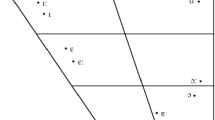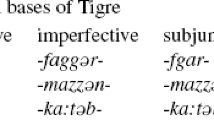Abstract
The present paper aims to explain the morphological opacity between vrăh (singular form) and vărhove (plural form) ‘peak’ in Bulgarian. Adding a plural suffix -ov- causes a change in the syllable structure of vrăh into vărh-, which is an irregular phenomenon. In order to explain the phenomenon, we not only adapted the Sonority Dispersion Theory, but also examined the respective diachronic phonological changes and the dialectal situation in Bulgarian. Although, according to the Sonority Dispersion Principle, the change of vrăh into vărhove is not optimal, vărhove still appears as a surface form; i.e. sonority is not the main factor of this alternation. Apart from that, the present study analyses the diachronic change of the liquid and the reduced vowel. We claim that there exists a connection between the vrăh – vărhove phenomenon and the phonological feature of syllabic liquid r and l in Old Slavic and resyllabification.
Аннотация
Эта статья объясняет морфологическую непрозрачность между връх (ед. ч.) и върхове (мн. ч.) в болгарском языке. Добавление суффикса мн. ч. -ов- ведет к изменению в структуре слога—връх – върхове, что является нерегулярным феноменом. Чтобы объяснить это, мы не только адаптировали фонологическую теорию Sonority Dispersion Theory, но и исследовали соответствующие диахронические фонологические изменения и диалектальную ситуацию в болгарском языке. Несмотря на то, что в соответствии с фонологической теорией Sonority Dispersion Principle изменение връх – върхове не является оптимальным, върхове все еще появляется как поверхностная форма. То есть сонорность не является главным фактором непрозрачности. Кроме этого, мы исследовали диахроническое изменение плавного согласного и редуцированного гласного. Мы считаем, что феномен връх – върхове связан с фонологической особенностью слоговой р и л в старом славянском языке и ресиллабификацией.









Similar content being viewed by others
Notes
Morphological homogeneity is an important factor for the participants of a communication process, because it helps the hearer to recognize the speaker’s utterance more easily. Moreover, language learners find it less difficult to deal with simplified and homogeneous communication processes.
The following abbreviations are used in this paper: Bg—Bulgarian, C—consonant, Det—determiner, G—glide, L—liquid, Lat—Latin, Lit—Lituanian, N—nasal, Nom—nominative, O—obstruent, OCS—Old Church Slavonic, O-Ind—Old-Indoeuropean, P—Polish, R—Russian, V—vowel, Vb—back vowel, Vf—front vowel, J—jer, ø—zero, \(\mu\)—mora, \(\sigma\)—syllable.
Kim (2007) notes that the phonetic and phonological characteristics of endings play more important roles than the morphological paradigm when a plural form or a determiner suffix is being chosen. All tables that were analyzed according to the Optimality Theory in Kim (2007) reaffirm this idea because the phonetic and phonological constraint on adjacent vowels (*VV) is a top-priority constraint. However, the dominance of the phonetic and phonological features causes misinterpretations of the meaning of the suffix.
Zec claimed that the mobile vowel could be explained through jer vocalization and jer deletion rules on the cyclic level and the post-cyclic level:
Jer vocalization (cyclic): J → [+tense, −high] / _________ C1J
Jer deletion (post-cyclic): J → ø
Cycle 1
kosJm
kosJm
(Jer vocalization)
-----
-----
Cycle 2
kosJm]J
kosJm]i
(Jer vocalization)
kosəm]J
-----
(Jer deletion)
kosəm
kosmi
Number of the possible consonants: 0–2.
The same metathesis is also found in an absolute word initial. These cases are excluded from the current research.
There are similar examples of VL metathesis in conjugation.
Three types of palatalization occurred in circa the fifth and sixth centuries in Slavic, and these palatalizations had big effects on the phonological structure of Slavic languages.
1st palatalization:
-
k > č
-
g > ž \(\left.\right\}\) / _____ Vf, j (Vf: front vowel)
-
x > š
2nd palatalization:
-
k > c
-
g > dź(>dz, z) \(\left.\right\}\) / _____ åi
-
x > ś(>š, s)
3rd palatalization:
-
k > c
-
g > dź(>dz, z) \(\left.\right\}\) / i, ь, in, ir _____ [all vowels except j and ъ]
-
x > ś(>š, s)
-
Selkirk (1984, p. 110, p. 112) proposed that the major class features (±syllabic) be eliminated entirely from a theory of the phonotactics of the syllable, and that they be replaced in effect by the sonority hierarchy and the assignment of a sonority index to individual segments that reflect the niche they occupy in that hierarchy.
Consonant p syllabifies rightward rather than leftward, giving the first syllable a relatively small decrease in sonority at its end and the second a relatively sharp rise at its beginning (Clements 1990, p. 300).
There are similar patterns as in vrăhove, e.g. vărha (non-nominative, with an article), vărhăt (nominative, with an article), and dva vărha (two peaks, masculine plural form).
“There is evidence that the nucleus and coda have an affinity for each other, both within adult grammars and in psycholinguistic tasks” (Bernhardt and Stemberger 1998, p. 112). We can also assume the length and the status of the vowel [ă], which is the nucleus of the given words. Therefore, unlike in the case of a single syllable, the pronunciation of the plural form causes a vocalic feature to be added to the subsequent syllable. From another perspective, Clements’ arguments for an affinity between the nucleus and coda may be a solution to this problem.
However, when considering words such as grănčar and glătka, which are from the same region, we should keep in mind that many exceptions to a classification that is based on the number of consonants exist.
We can find further examples of syllabic liquids in present-day Serbo-Croatian, Slovenian, Czech, and Slovak (Xaburgaev 1974, p. 137).
References
Barnes, J. (1998). Bulgarian liquid metathesis and syllabification in Optimality Theory. In Ž. Bošković, S. Franks, & W. Snyder (Eds.), Formal Approaches to Slavic Linguistics (FASL-6). The Connecticut Meeting 1997 (Michigan Slavic Materials, 43, pp. 38–53). Ann Arbor.
Bernhardt, B. H., & Stemberger, J. P. (1998). Handbook of phonological development. From the perspective of constraint-based nonlinear phonology. San Diego.
Chun, S. (2004). Phonology [
 .
.  .
.  —Jeon, Sangbeom. Eumullon]. Seoul.
—Jeon, Sangbeom. Eumullon]. Seoul.
Clements, G. (1990). The role of the sonority cycle in core syllabification. In J. Kingston & M. E. Beckman, Between the grammar and physics of speech (Papers in Laboratory Phonology, 1, pp. 283–333). Cambridge, New York.
Duridanov, I. (Ed.) (1991). Grammatika na starobălgarskija ezik. Fonetika, morfologija, sintaksis. Sofija.
Fasmer, M. (1986). Ėtimologičeskij slovar’ russkogo jazyka. Moskva.
Georgieva, E. (Ed.) (1989). Istorija na novobălgarskija knižoven jezik. Sofija.
Hooper, J. (1972). The syllable in phonological theory. Language, 48, 525–540.
Jespersen, O. (1922). Language: its nature, development and origin. London.
Kahn, D. (1976). Syllable-based generalizations in English phonology (Doctoral dissertation). MIT, Massachusetts.
Kim, W. (2007). Opposition and harmony in formal and phonological motivations. East European Studies, 18(1), 3–25. [
 ].
]. 




 .
.  18–1, 3–25, Kim, Wonhoi. Hyeongtaejeok dongingwa eumseong-eumunjeok dongineui daeripgwa johwa. Dongyureobyeongu, 18(1), 3–25.
18–1, 3–25, Kim, Wonhoi. Hyeongtaejeok dongingwa eumseong-eumunjeok dongineui daeripgwa johwa. Dongyureobyeongu, 18(1), 3–25.
Kostov, K. (1960). Edin slučaj na vtorično săčetanie TRЪТ – ТЪRТ ot părvonačalna srička RA meždu săgalsni d njakoi bălgarski dialekti. Bălgarski ezik, 1, 51–54.
Lekov, I. (1961). Strukturni i tipologični promeni na praslavjanskite silabični R i L v polskija i bălgarskija ezik. Ezik i literatura, 3, 1–8.
Mladenov, S. (1979). Istorija na bălgarskija jezik. Sofija.
Petrova, R. (1994). Prosodic theory and schwa metathesis in Bulgarian. In S. Avrutin, S. Franks, & L. Progovac, Formal Approaches to Slavic Linguistics (FASL-4). The MIT Meeting 1993 (Michigan Slavic Materials, 36, pp. 319–340). Ann Arbor.
Scatton, E. A. (1975). Bulgarian Phonology. Cambridge.
Selkirk, E. (1984). On the major class features and syllable theory. In M. Aronoff & R. T. Oehrle (Eds.), Language sound structure (Studies in Phonology, pp. 107–136). Cambridge.
Stojkov, S. (2002). Bălgarska dialektologija. Sofija.
Tilkov, D. (1982). Bălgarska fonetika. Sofija.
Velčeva, B. (1973). Pravila, poraždašči izmenenijata na [r], [l] v tri bălgarski govora. In V. I. Georgiev & I. Lekov (Eds.), Slavjanska fililogija. Tom 12: Ezikoznanie (pp. 221–236). Sofija.
Vidoeski, B. (1971). Sud’ba slogovogo r v govorax makedonskogo jazyka. In Z. I. Tolstoj & E. V. Češko (Eds.), Issledovanija po slavjanskomu jazykoznaniju (pp. 305–313). Moskva.
Xaburgaev, G. A. (1974). Staroslavjanskij jazyk. Moskva.
Zec, D. (1988). Bulgarian ə epenthesis: a case for moraic structure. NELS, 18(2), 553–566.
Author information
Authors and Affiliations
Corresponding author
Additional information
This work was funded by Hankuk University of Foreign Studies Research Fund of 2015.
Rights and permissions
About this article
Cite this article
Kim, W., Byun, K. & Ahn, H. Diachronic and synchronic perspectives of morphological opacity in Bulgarian: an analysis of the vrăh – vărhove phenomenon. Russ Linguist 40, 185–198 (2016). https://doi.org/10.1007/s11185-016-9164-y
Published:
Issue Date:
DOI: https://doi.org/10.1007/s11185-016-9164-y





 .
.  .
.  —Jeon, Sangbeom. Eumullon]. Seoul.
—Jeon, Sangbeom. Eumullon]. Seoul.
 ].
]. 




 .
.  18–1, 3–25, Kim, Wonhoi. Hyeongtaejeok dongingwa eumseong-eumunjeok dongineui daeripgwa johwa. Dongyureobyeongu, 18(1), 3–25.
18–1, 3–25, Kim, Wonhoi. Hyeongtaejeok dongingwa eumseong-eumunjeok dongineui daeripgwa johwa. Dongyureobyeongu, 18(1), 3–25.